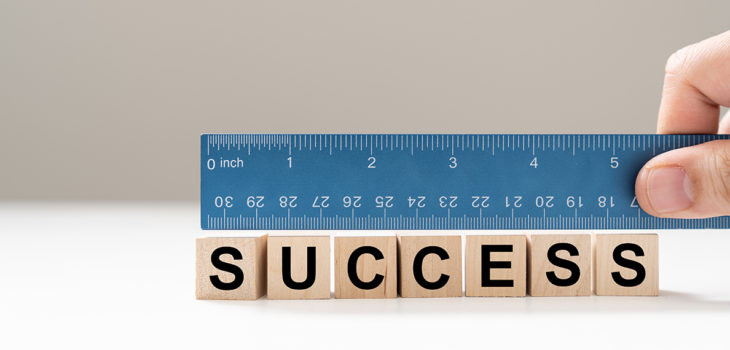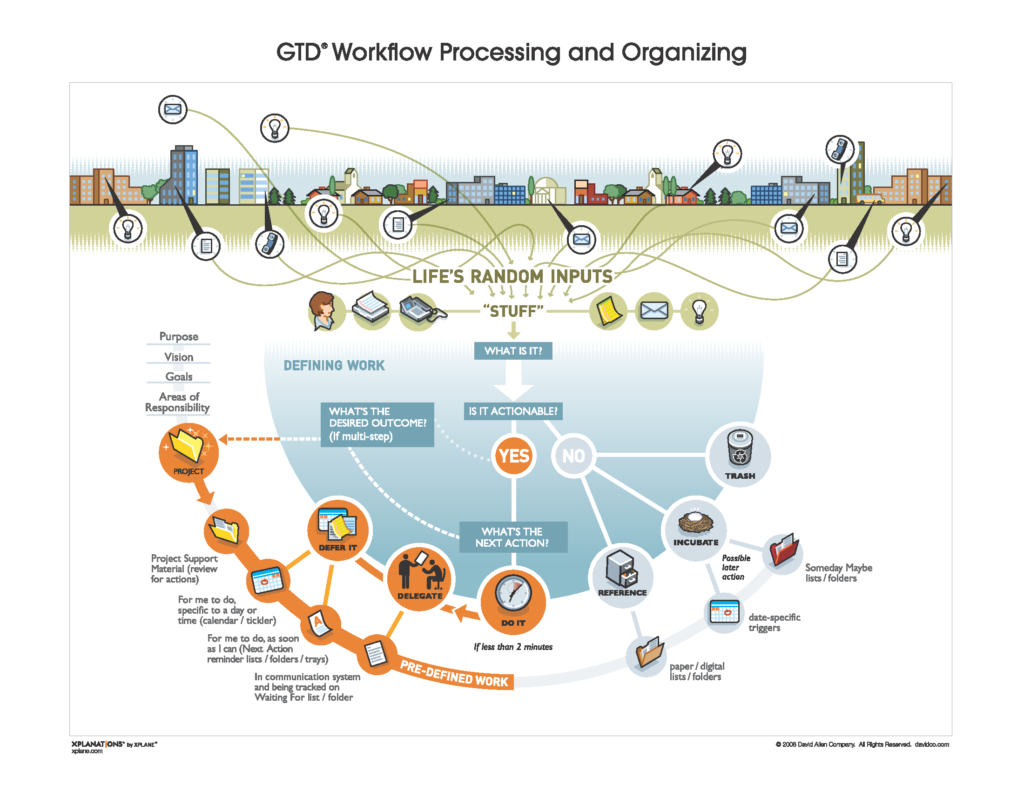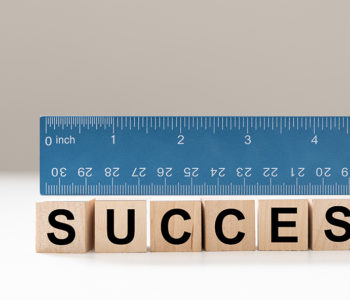 Productivity
Productivity GTD: Back to Basics – Part 1
Productivity
When I think about productivity systems, I fall back to the one that I am most comfortable with, GTD. The methodology has always resonated with my own philosophies on how to accomplish the incremental steps toward my goals.
In recent years, I have focused more on the reflection and the workflow process steps in an effort to understand the requirements of each. Getting clarity on how my system would interact in relation to those steps with a focus on how I can improve the integration into my life in increasingly frictionless ways.
Why we should do this?
There comes a point in that journey, where you need to refresh yourself on the basics, to come back to your foundations. Re-enforcing your critical processes and behaviors to strengthen the core of your system and improve your productivity flow.
In my article, Applied GTD, I detailed some of the observations that I had over the years, and when dealing with a foundational review, those become part of my overall focus and decision-making process. I highly recommend you check them out, and yes, I am biased.
There are four foundational areas that I am recommending be the focal point of any foundational review:
- Ensuring that you are properly and consistently applying the 2-minute rule.
- Reviewing and understanding the workflow process and how it applies in your life.
- Get comfortable with your review and reflection routines, and be brutally honest with yourself.
- Become a mind sweep ninja, and dedicate yourself to ensuring that the “stuff” coming in is funneled into your process.
We will be expanding on these topics as we continue along, and remember that my opinions are just that, mine. What works for me and my process may not be your cup of tea. The goal here is to give inspiration on the tactics that I leverage so that if you find them of benefit you will understand how they can be utilized to improve your own process.
General Practices
2 Minute Rule
If an action will take less than two minutes, it should be done at the moment it’s defined.
Seems simple enough in theory, get the small things done early and knock them out of the way so that you can focus on the larger items without so many distractions. Making this one of your core behaviors provides the largest benefit out of any other productivity practice regardless of the methodology.
First of all, the key thing is to decide what the very next action on something I need to do about any of this change that’s happening, any of this stuff I’m involved in right now. What would I need to do next? Once you’ve decided very clearly and specifically what that is if you can do it in less than two minutes, do it right then. After all, don’t waste the effort that it would take to track the item when the same effort could be used to take it off your list.
Workflow Cycles

Everything has a progression, steps that could or should be taken to end at the result that you would like to achieve, whether done deliberately, accidentally, or unintentionally. The goal is to get there through deliberate actions on a consistent basis.
Having a process or workflow to help you process all of the stuff that you have to deal with helps to put all of this into context in some way or another. That only gets you to a level of organization, to really become proficient at being productive you need direction. That is where the different horizon levels come into play.
Purpose, Vision, Goals, and Areas of Responsibility
Defining these different perspectives for your practice and generally for your life helps to give it the structure to shape and define how the processing of the stuff falls into a meaningful context. Any particular action could be considered successfully complete if you have no expectation of an end result no matter how far out that result is from the time the action was taken.
What makes that action important is how it falls in line with the context of what you are trying to achieve.
What is the purpose you are fulfilling, what vision do you have to make that a reality, what goals have you set to help keep you on track to that outcome and what areas do you need to focus on to make sure you end up at the place you want to be with complete confidence that you have handled all that needs to be done.
Take your time and shape these concepts well for yourself, they can and will change as you gain experience and expertise in how to manage your productivity systems. Having them well considered at the beginning will streamline your ability to improve your process to the point where it is frictionless to interact with.
Efficiency Goals and Behaviors
Frictionless
Definition: achieved with or involving little difficulty; effortless.
Remember this is a goal, something to strive for, and you may have to adapt and adjust this on a regular basis to achieve any type of success at it. When something becomes truly frictionless, it also becomes autonomic, to a point where you do it so fluidly it is as natural as breathing.
Consistency
Building Habits takes time and repetition. Focusing on the Cue/Routine/Reward cycle to improve the habit’s ability to stick as a consistent behavior.
Consistency requires Will Power, it can be treated as a skill, a finite resource, and a muscle all in one, You have to have the self-discipline to resist immediate gratification, and identify what is drawing the most out of your willpower reserves so that you can more effectively handle situations where you will need more will power to accomplish.
This needs exercise, training, and visualization so that you already have a plan on how to handle inflection points so that it is less of a drain on your active reserves. (Doing the prework, makes the work easier).
Rewarding
Changing behaviors requires hacking your own habits, which starts with identifying the habit’s cue triggers while keeping the same reward, you change the habit routine and consistently work that until it has effectively replaced the old habits. Small wins are the goal, they help to reinforce keystone habits and cement the new routines in place, and that will bleed over into other parts of your life and productivity habits. They build on each other.
In the next article, we will focus on how to become better at getting your mind clear and keeping on task to ensure your productivity system is one you can maintain your trust in. Be sure to stay tuned in for more helpful insights on productivity and feel free to reach out and let us know if this helped your own productivity practice!








